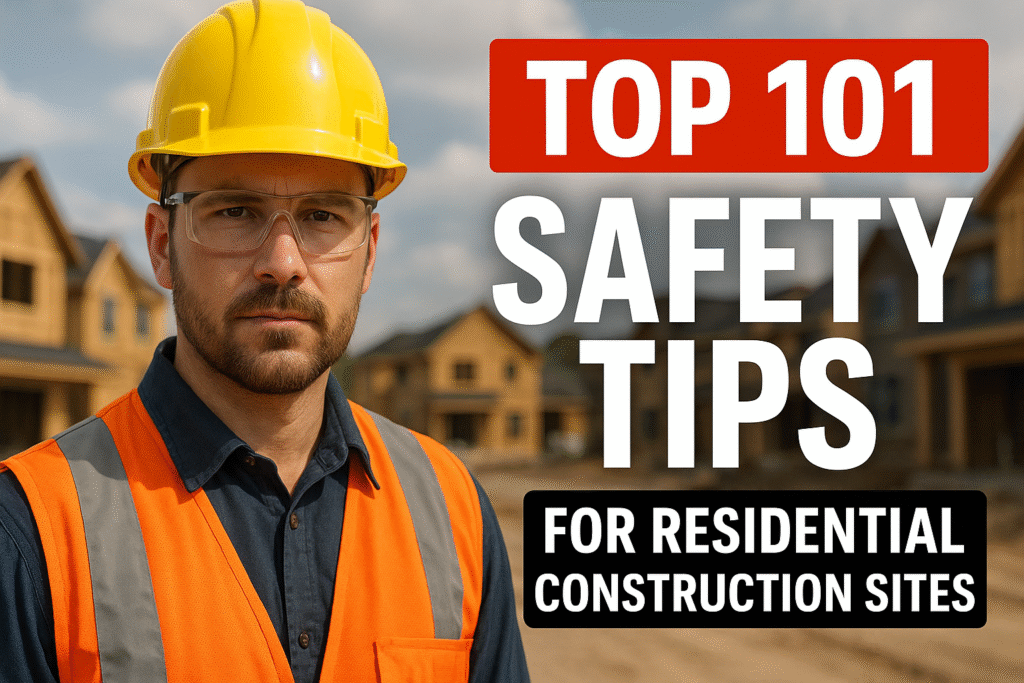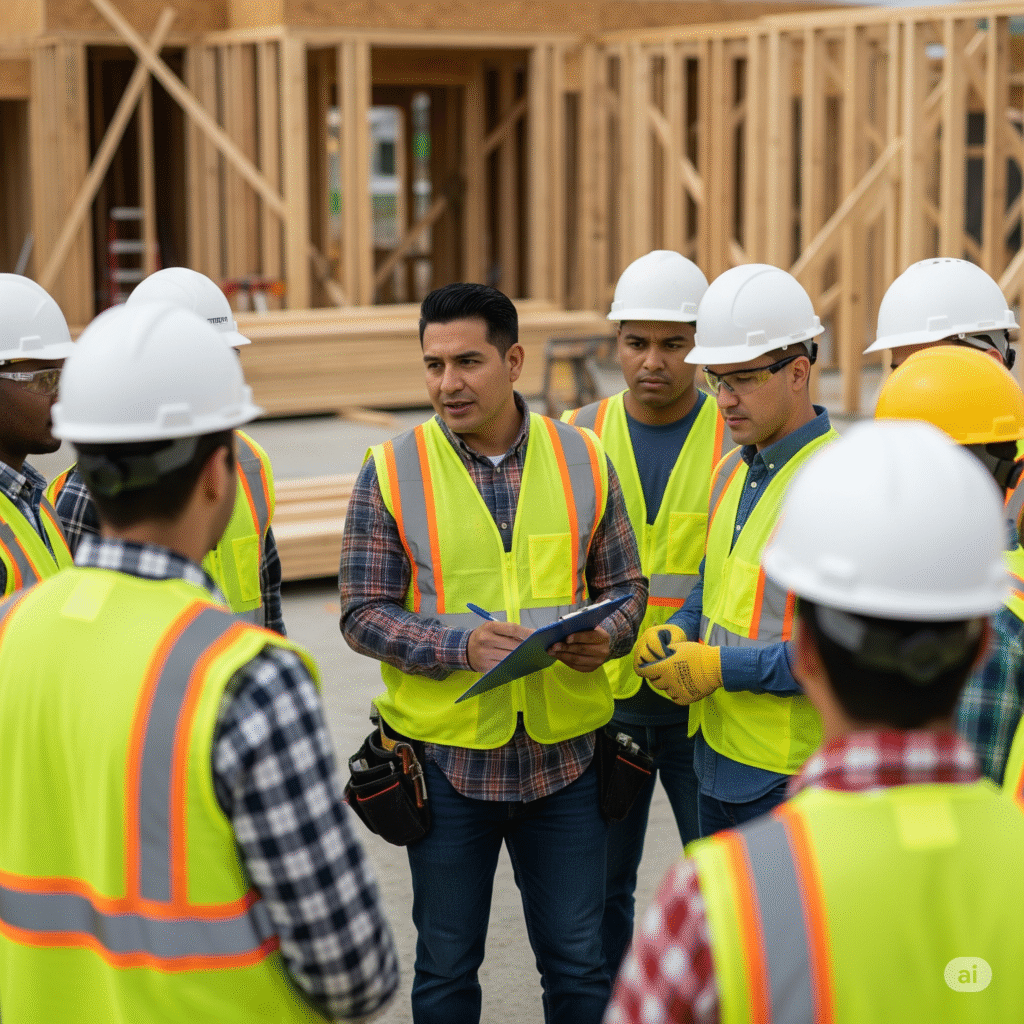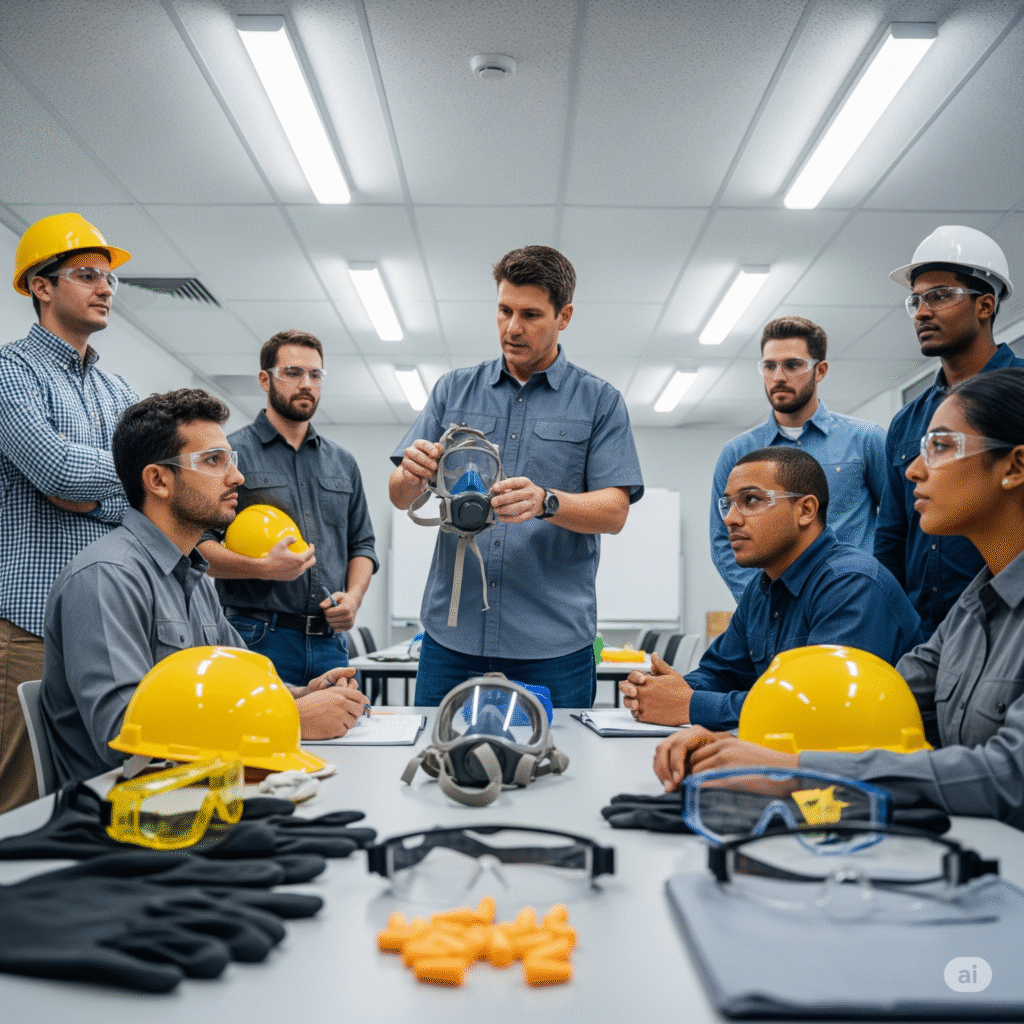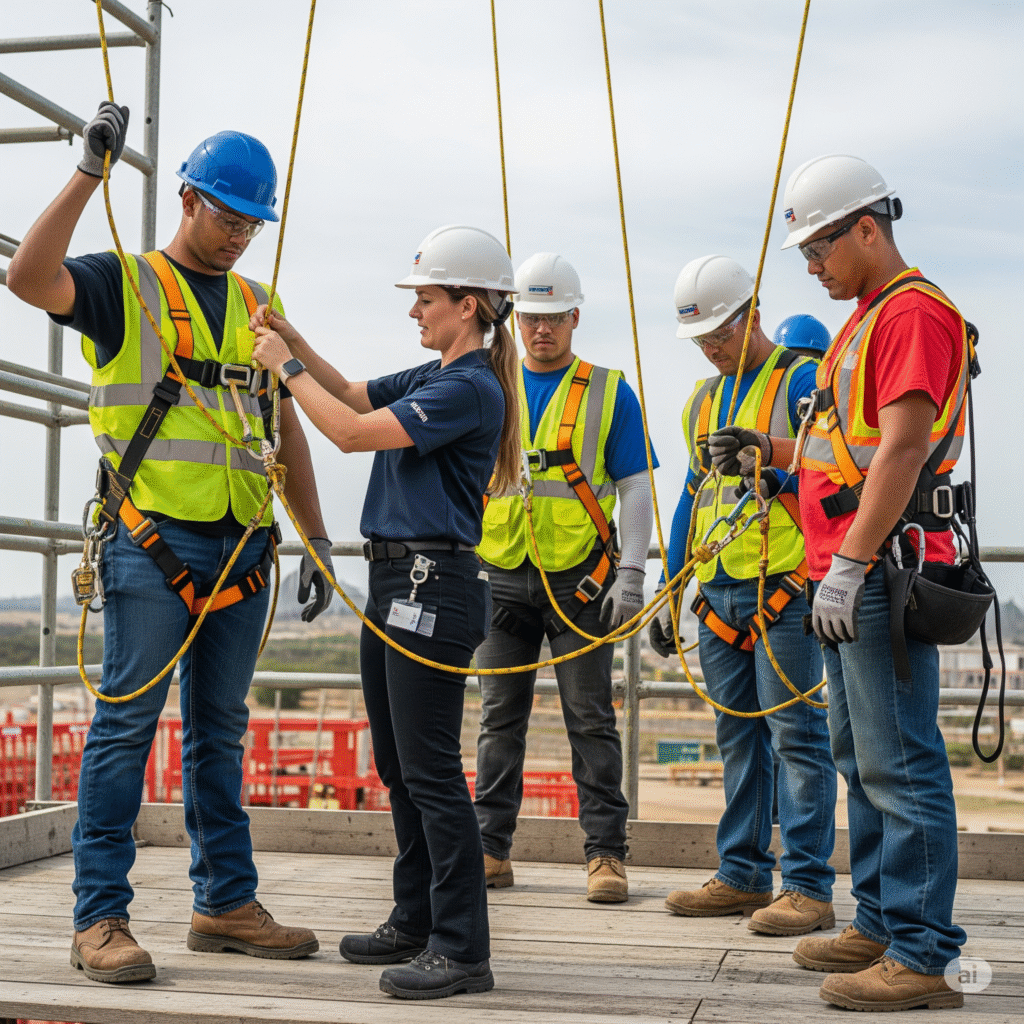Safety Tips for Residential Construction Sites : Building homes is rewarding, but it’s also risky. Top 101 Safety Tips for Residential Construction Sites is your essential guide to protecting workers, preventing injuries, and ensuring every project runs smoothly.

- Safety Tips for Residential Construction Sites
- Planning and Leadership (1–10)
- Site Orientation and Training (11–20)
- PPE Essentials (21–30)
- Fall Protection (31–40)
- Tools and Equipment Safety (41–50)
- Manual Handling and Ergonomics (51–60)
- Housekeeping and Site Organization (61–70)
- Communication and Culture (71–80)
- Subcontractor Engagement (81–90)
- Environmental and Health Hazards (91–101)
- Final Thoughts on Top 101 Safety Tips for Residential Construction Sites
Safety Tips for Residential Construction Sites
These tips cover planning, PPE, fall protection, tools, housekeeping, communication, subcontractors, and more. Use them to build a safety-first culture on every residential site you manage.
According to the Occupational Safety and Health Administration (OSHA) (dofollow), falls are the leading cause of death in residential construction. These 101 safety tips help you go beyond compliance to achieve real safety.
Planning and Leadership (1–10)

- Develop a written safety plan for every project.
- Conduct pre-construction safety meetings with all contractors.
- Assign clear safety responsibilities to supervisors.
- Budget for safety equipment and training.
- Include safety requirements in subcontractor contracts.
- Perform site-specific hazard assessments before work begins.
- Establish an emergency response plan.
- Conduct daily pre-job safety huddles.
- Make safety a standing agenda item in meetings.
- Lead by example—owners and managers must model safe behaviors.
Site Orientation and Training (11–20)

- Provide mandatory site orientations for all workers.
- Cover site-specific hazards and procedures.
- Offer fall protection training to all workers at height.
- Train workers on safe lifting techniques.
- Include PPE training in orientation.
- Hold regular toolbox talks on rotating topics.
- Provide training in workers’ primary languages.
- Offer mentorship for young or inexperienced workers.
- Keep training records for accountability.
- Refresh training periodically to maintain skills.
PPE Essentials (21–30)
- Mandate hard hats on site at all times.
- Ensure proper use of safety glasses and face shields.
- Provide hearing protection where needed.
- Select the right gloves for the task.
- Require high-visibility vests on active sites.
- Use respiratory protection for dust-generating tasks.
- Inspect PPE regularly and replace as needed.
- Fit-test respirators for all users.
- Store PPE clean and dry between uses.
- Train workers on PPE care and maintenance.
Fall Protection (31–40)
- Use guardrails on elevated work platforms.
- Install proper fall arrest systems for roof work.
- Inspect harnesses and lanyards before use.
- Train workers in proper harness use.
- Maintain clear access and egress for ladders.
- Secure ladders on stable surfaces.
- Use the right ladder height for the job.
- Keep scaffolds level and fully planked.
- Check weather conditions before working at heights.
- Avoid shortcuts or improvising with fall protection.

Tools and Equipment Safety (41–50)
- Inspect power tools daily.
- Use tools only for their intended purpose.
- Maintain sharp blades and bits to reduce strain.
- Ensure guards are in place on saws and grinders.
- Train workers on new equipment.
- Lock out/tag out tools during maintenance.
- Keep cords clear of walkways.
- Use battery-powered tools safely.
- Store tools securely to prevent theft or misuse.
- Document all maintenance and inspections.
Manual Handling and Ergonomics (51–60)
- Plan lifts to avoid awkward postures.
- Use team lifts for heavy materials.
- Provide carts and dollies for transport.
- Avoid twisting while lifting.
- Keep loads close to the body.
- Use mechanical aids where possible.
- Rotate tasks to reduce strain injuries.
- Design workstations for neutral postures.
- Train workers in ergonomic practices.
- Encourage microbreaks for recovery.
Housekeeping and Site Organization (61–70)
- Keep walkways clear of debris.
- Organize materials to avoid trips.
- Clean spills immediately.
- Store tools and materials securely.
- Separate waste from reusable materials.
- Use designated areas for smoking.
- Mark hazards clearly with signage.
- Remove nails from scrap lumber.
- Secure scaffolding and ladders when not in use.
- Conduct daily housekeeping inspections.
Communication and Culture (71–80)
- Hold daily safety huddles.
- Conduct regular site safety inspections.
- Encourage open reporting of hazards.
- Reward safe behaviors publicly.
- Address violations consistently and fairly.
- Use clear signage for hazards and procedures.
- Translate key instructions for diverse crews.
- Maintain a blame-free incident reporting system.
- Share lessons learned from incidents.
- Build safety into performance evaluations.
Subcontractor Engagement (81–90)
- Include safety requirements in bids and contracts.
- Hold subcontractors to the same standards as your crew.
- Require site orientations for all subcontractor workers.
- Include subcontractors in toolbox talks.
- Share site rules in writing.
- Review subcontractor safety plans.
- Inspect subcontractor work for compliance.
- Enforce consequences for violations.
- Provide support and resources for safety training.
- Recognize subcontractors who excel in safety.
Environmental and Health Hazards (91–101)
- Control silica dust with wet cutting or vacuums.
- Manage asbestos risks in renovations.
- Use low-VOC materials when possible.
- Store chemicals in labeled, secure containers.
- Train workers on chemical hazards.
- Prepare spill response kits.
- Plan for heat stress prevention.
- Provide shaded rest areas in summer.
- Encourage hydration breaks.
- Prepare for cold stress with warm gear and breaks.
- Promote mental health awareness and resources.
Final Thoughts on Top 101 Safety Tips for Residential Construction Sites
These Top 101 Safety Tips for Residential Construction Sites aren’t just for compliance—they’re about protecting workers’ lives and your business’s future.
By adopting these tips, you can build a safety-first culture that attracts top talent, impresses clients, and reduces costly incidents.
If you’re ready to take the next step, explore our related articles like Engaging Subcontractors in Your Site Safety Culture (internal link) and Building a Safety-First Culture on Residential Construction Sites (internal link).


No comments yet